
Meanings and Misconceptions of Chinese Porcelain Marks Chinese porcelain, Pottery marks, Porcelain
This selection of marks below contains mainly Chinese porcelain marks of the Ming and Qing dynasties, and a few republic period antique marks. Marks listed below are from antiques that are about 80 years old or older. That means from approximately 1930 or earlier. Marks on vintage and contemporary porcelain items are not included.
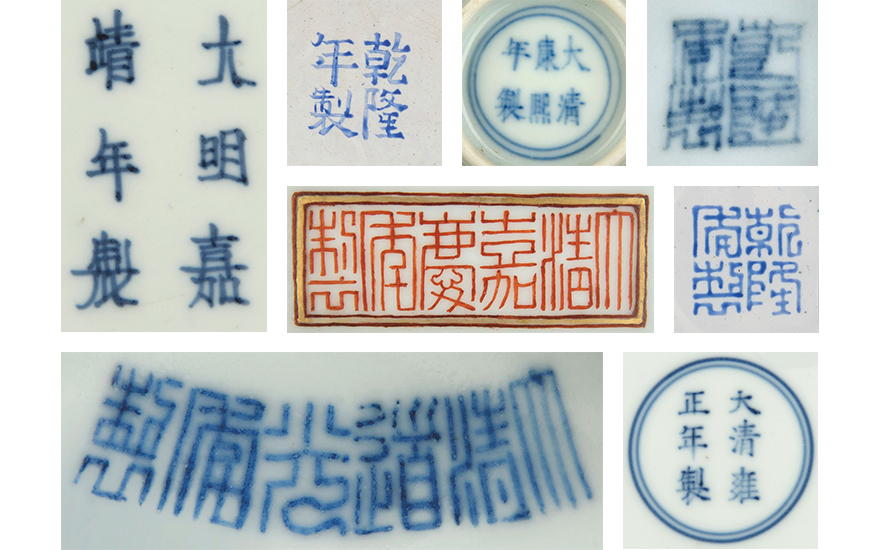
专家指南:中国瓷器年款 Christie's
The Origin of Reign Marks Reign marks were in common usage at the beginning of the Ming dynasty (1368-1644) and continued throughout the subsequent Qing dynasty (1644-1911). Although reign marks were used into the 20th Century, there was a short period that they were forbidden to be used.
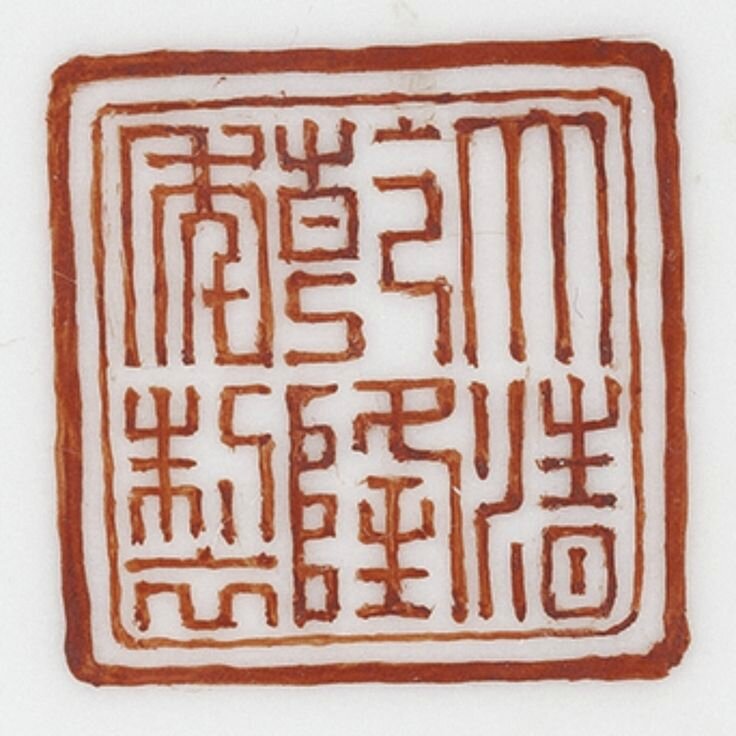
A fine and rare ironred decorated 'Dragon' stem bowl and cover, Seal marks and period of
How to Read the Marks? Enamel paited porcelain made in Qing's Emperor Qianlong's reign. According to the ancient Chinese tradition of writing and reading, the marks on the bottom of a porcelain vessel are usually read from top to bottom, and from right to left. Marks written horizontally are read from right to left.
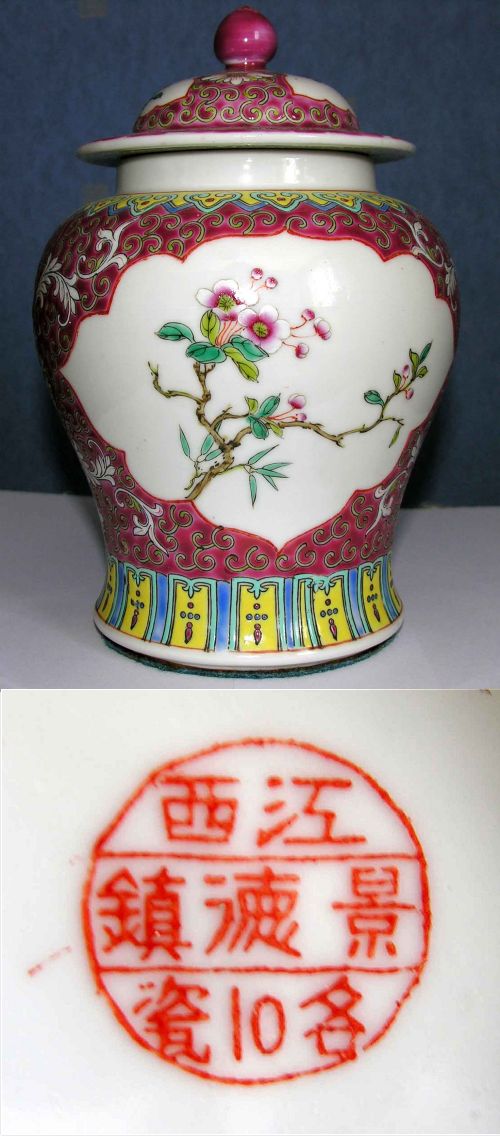
Marks on Chinese Porcelain
Valuable Chinese pottery marks are sometimes known as reign marks. And no, we don't mean 'Made in China'. These marks are written vertically, right to left, using indigenous Chinese characters. A typical mark has 4 to 6 symbols confirming the emperor and dynasty. Item: Porcelain Statue Year: 1960s or 1970s Value: $2,600

Sold Price Chinese iron red porcelain jar, Qianlong mark. April 6, 0117 1000 AM EDT
Chinese reign and seal marks on porcelain are usually hand-written in underglaze blue or over the surface of the glaze in iron red pigment. They can sometimes also be incised or stamped/carved in relief and glazed over. Later 19th and 20th century marks are sometimes printed using rubber stamp in either red or blue. Need more help?

Red Chinese Pottery Marks lupon.gov.ph
Chinese Mitten Crab - Eriocheir sinensis (Introduced) Sharp-nosed Crab - Scyra acutifrons; Blackclaw Crestleg Crab - Lophopanopeus bellus Crab Notes. The native Red Rock Crab preys on invasive species like the European Green Crab. Crab Articles and Links. California Crabs by Ken Jones, written from a fisherman's point of view. Includes photos.

Help identify Chinese Bowl Qianlong mark antique or modern Collectors Weekly
The 10th of October 1928 the Kuomintang declared a reconstituted Republic of China, and also decreed that as of 1th January 1929 everyone must use the Gregorian calendar. The earliest example I have so far on the practice of dating porcelain after the Gregorian calendar is from April that very same year, 1929, in very small characters.
Chinese iron red porcelain plate, Qianlong mark.-【Deal Price Picture】
Often times a piece of china will bear two marks in this way: one beneath the glaze, indicating the factory that produced the blank, and the second above the glaze indicating the decorator. Much Haviland china, for example, bears the green underglaze mark "Haviland France," and the red decorators stamp: "Haviland & Co. Limoges."
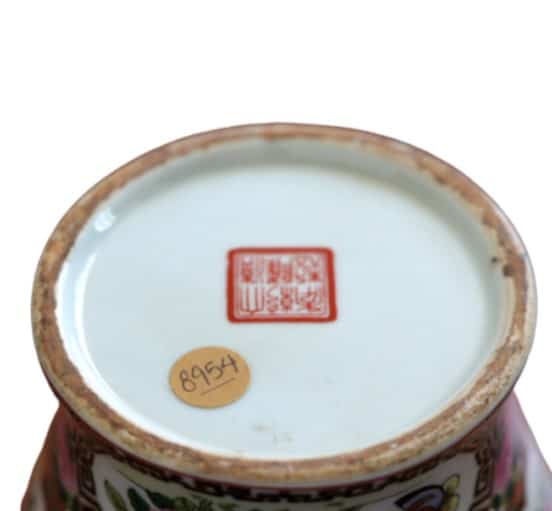
17 Most Valuable Chinese Pottery Marks Worth Money
Marks on Chinese Porcelain Marks on Later Chinese Porcelain It is said, that the only rule that is really certain when it comes to Chinese reign marks, is that most of them are NOT from the period they say. Still the marks are something of a fingerprint of the potter and its time.

Chinese Porcelain Vase Iron Red Qianlong Mark
Marks Identification. One of the first steps in determining the age of Chinese porcelain is to look at the bottom of the piece and read the reign marks. Needless to say, there are other important criteria to determine the actual age and the authenticity of an antique porcelain, since nothing is easier that to write an old date on the bottom of.

Red Rare Chinese Porcelain Marks lupon.gov.ph
Identifying Marks and Inscriptions MARKS AND INSCRIPTIONS ON CHINESE PORCELAIN AND POTTERY # Introduction # Identifying Chinese and Japanese Ceramics is more than just looking at the marks and inscriptions. It is very important to see it into the context of multiple things. How the porcelain feels to the touch.

Image result for Chinese Pottery Marks Identification Red Seal Chinese chop, Chinese artwork
Chinese Porcelain Reign Marks Modified: Dec 8, 2021 by Dimi · This post may contain affiliate links · 2 Comments In the world of Ming and Qing dynasty art, knowing how to look at a reign mark is a key asset for any collector, specialist, or enthusiast to correctly identify the date and the value of a piece of Chinese porcelain.

Red Chinese Porcelain Marks Identification Video Bokep Ngentot
Marks of different colors To somewhat organize this subject, marks could be red or blue, handwritten, or applied with a rubber stamp. The four red marks in the picture above are Chinese and rubber-stamped, which usually indicates "around 1900".
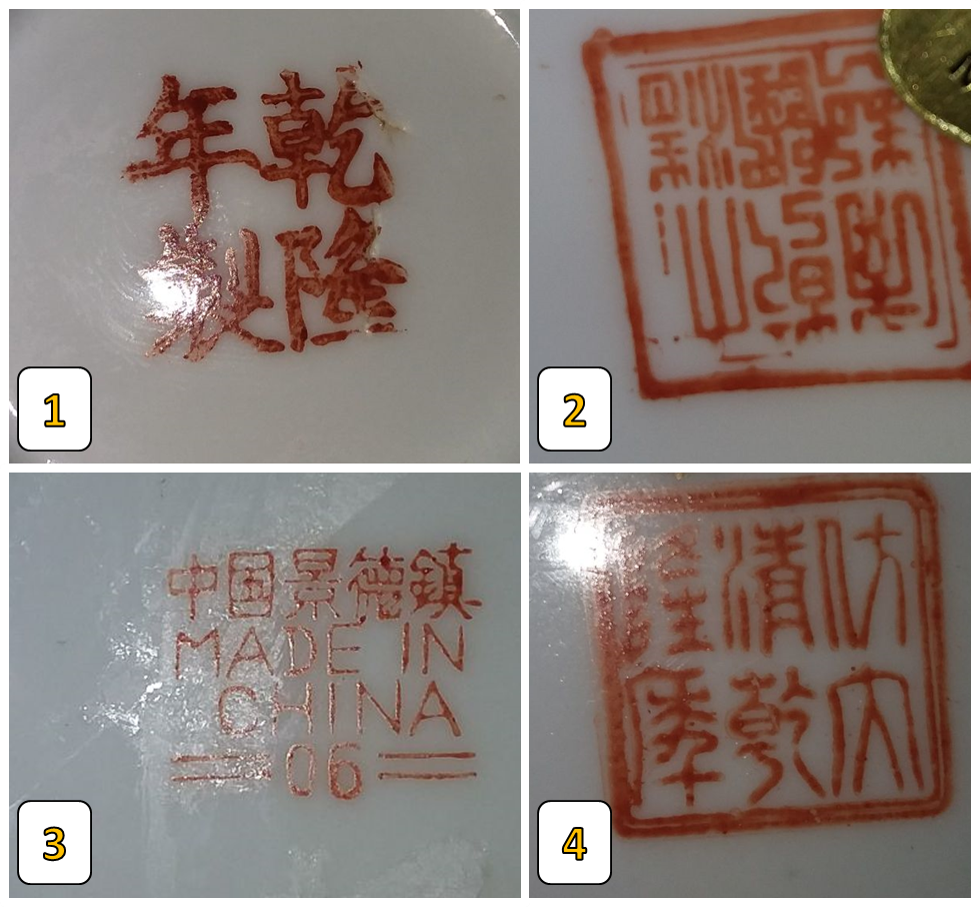
Chinese Porcelain Marks Identification
186. Mark on modern Chinese porcelain spoon. 379. Stamped mark on modern porcelain figure. 380. "Qian Men, Quan Ju De" (Front Gate, Quan Ju De ( Restaurant )). Quan Ju De is a symbol of Old Peking, the famous Peking Duck shop opened in 1864. Front Gate, the city gate - was built in Yuan and original named Li Zheng Men.

Chinese Porcelain Vase Iron Red Qianlong Mark
You can compare your Chinese Pottery with other verified items online or at a convention. Glaze. Older Chinese Pottery used the underglaze method to paint the reign mark underneath the Porcelain, while modern designers used overglaze. Also, inspect your antique Chinese Pottery for kiln firing signs to avoid picking a mass-produced modern.
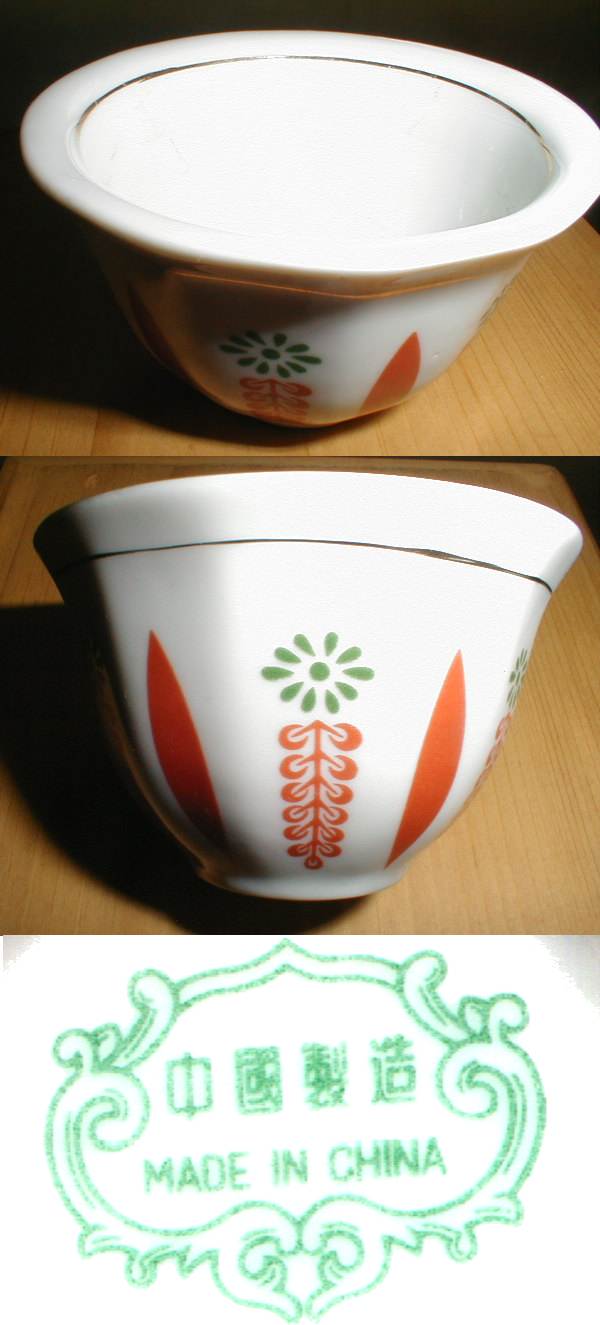
Marks on Chinese Porcelain
Reign Marks When Emperor Zhenzong demanded his reign be recorded on porcelain, it ignited a tradition of marking porcelain wares that lasted well into the 20th century. These markings, known as "reign marks," loosely indicate Nien-hao or the imperial reign when it was created.